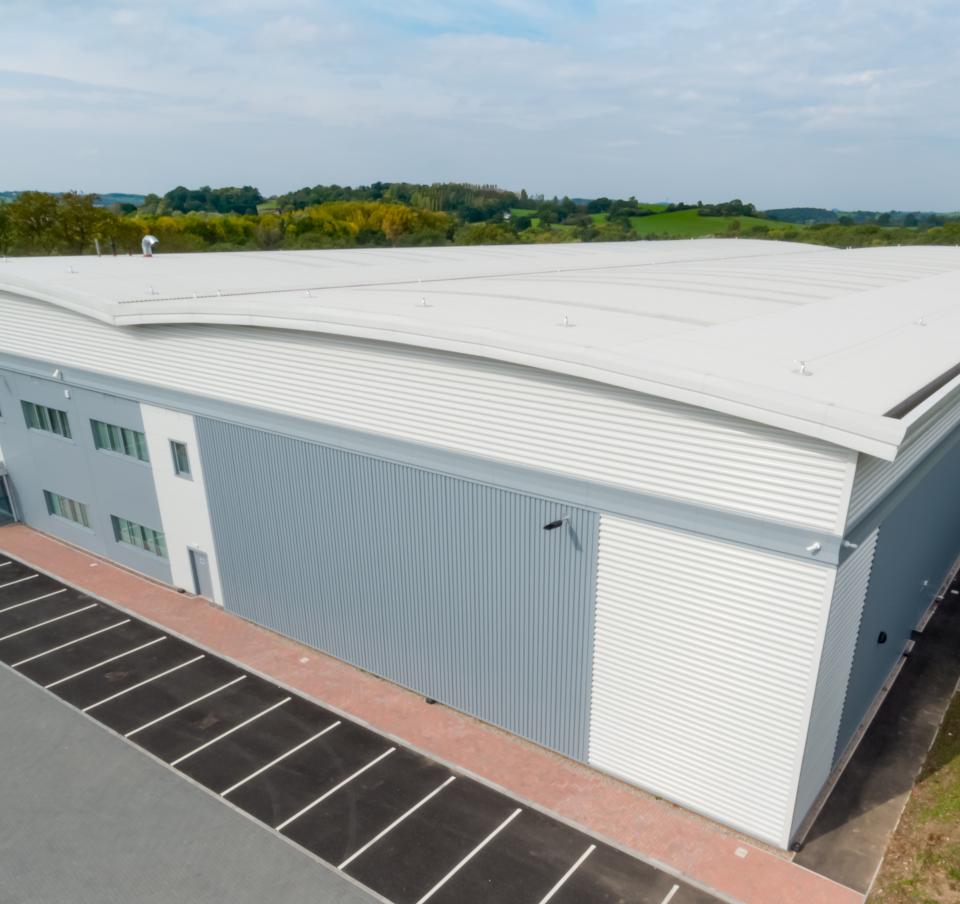For roof fire safety the mandatory section of the ‘Building Regulations state - The roof of the building shall adequately resist the spread of fire over the roof and from one building to another, having regard to the use and position of the building.
The 2019 edition of Approved Document B (ADB) brought along several changes affecting roofing. For one, the principal determinant of external fire performance for roofs is no longer the national classification system BS 476-3:2004, but the European classification system BS EN 13501-5 (which ran alongside the national classification system for years).
This European classification covers External Fire Penetration and Spread of Flame of roof systems in their response to fire from outside the building, not to be confused with individual components tested for reaction to fire to BS EN 13501-1.
The standardisation into one European test proved indefinable as many countries within the EU had differing regulations and so four test standards were required to cover the legislation in place within the various member states at the time.
These are the TS 1187 series of test which contain four methods. These four methods assess the performance of roofs under the following conditions:
- Method 1: with burning brands (Germany)
- Method 2: with burning brands and wind (Scandinavia)
- Method 3: with burning brands, wind and supplementary radiant heat (France)
- Method 4: Two stage test method incorporating burning brands, wind and supplementary radiant test.
In the UK the results from testing under TS 1187 with BS EN 13501-5 classification are given as European Class ratings BROOF(t4), CROOF(t4), DROOF (t4), EROOF(t4) and FROOF(t4).
The test methodology measures both the penetration and spread of flame during a specified period, the test is intended to replicate a real life situation, therefore is conducted on the full system build-up, and not the individual components. After assessment the performance rating of the system is determined according to the results observed.
BROOF(t4)
- No penetration of roof system within 60 minutes
- In preliminary test, after withdrawal of the test flame, specimens burn for less than 5 minutes
- In preliminary test, flame spread less than 0.38 m across region of burning
CROOF(t4)
- No penetration of roof system within 30 minutes
- In preliminary test, after withdrawal of the test flame, specimens burn for less than 5 minutes
- In preliminary test, flame spread less than 0.38 m across region of burning
DROOF(t4)
- Roof system is penetrated within 30 minutes but is not penetrated in the preliminary test
- In preliminary test, after withdrawal of the test flame, specimens burn for less than 5 minutes
- In preliminary test, flame spread less than 0.38 m across region of burning
EROOF(t4)
- Roof system is penetrated within 30 minutes but is not penetrated in the preliminary test
- Flame spread is not controlled
FROOF(t4)
- No performance determined
To try and review how these ratings compare with the BS476-3 test and also the requirements of the relevant building regulations we have summarised these evaluations below.
|
National Class
|
European Class
|
Minimum distance from any point on relevant boundary (England, Wales & NI)
|
Minimum distance from any point on relevant boundary (Scotland)
|
|
AA, AB or AC
|
BROOF(t4)
|
Unrestricted and can be used anywhere on the roof
|
Low Vulnerability (<6m)
|
|
BA, BB or BC
|
CROOF(t4)
|
At least 6m of the boundary
|
Medium Vulnerability (6-24m)
|
|
CA, CB or CC
|
DROOF(t4)
|
At least 6,12 or 20m of the boundary depending on the building type and use
|
Medium Vulnerability (6-24m)
|
|
AD, BD or CD
|
EROOF(t4)
|
At least 6,12 or 20m of the boundary depending on the building type and use
|
High Vulnerability (>24m)
|
|
DA, DB, DC or DD
|
FROOF(t4)
|
At least 20m of the boundary depending on the building type and use
|
High Vulnerability (>24m)
|
TO CONCLUDE
If a roof system is classified BROOF(t4), there will be no penetration of the roof system within 60 minutes. During the preliminary test, specimens will burn for less than 5 minutes, once withdrawn from the test flame and during the preliminary test, flame spread will be less than 0.38m across the region of burning. These results conclude that the product can have unrestricted use in accordance with Part B (fire) of the building regulations All Tata Steel UK Building system products and systems are available with a BROOF(t4) classification.
Find out about our PLCB and FM fire testing approvals here.
For further information please contact technical.envelopeproducts@tatasteeleurope.com




































































































































































































































